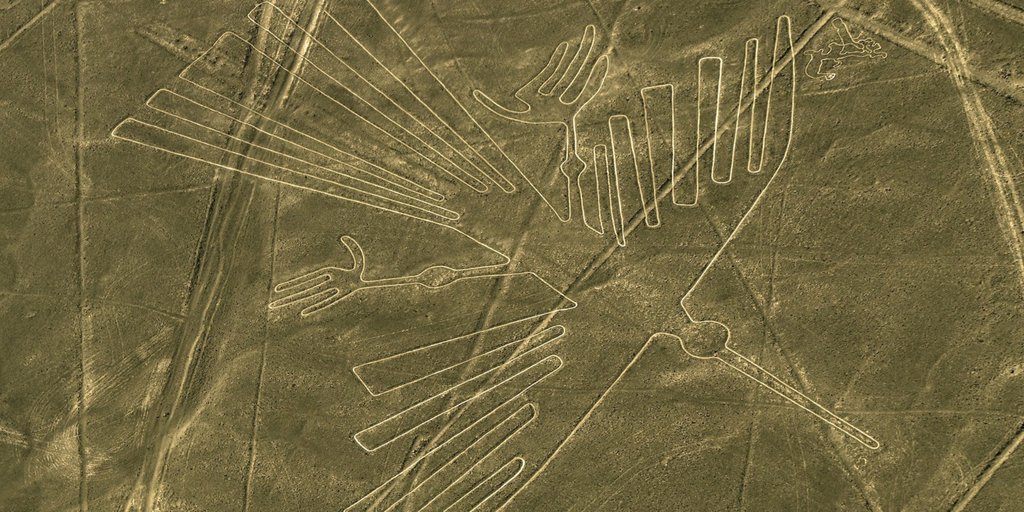Scientists have made a remarkable discovery using artificial intelligence – or AI – in Peru’s Nazca Desert. Utilizing AI and other advanced technology, researchers have identified three previously unknown Nazca Lines figures, which were etched into the desert floor over 2,000 years ago.
AI Finds More Nazca Geoglyphs

The largest of the newly found geoglyphs is a massive pair of legs, spanning an impressive 250 feet (77 meters) in width. Additionally, a fish measuring 62 feet (19 meters) across and a bird measuring 56 feet (17 meters) wide were also discovered. This comes after scientists previously employed the same AI method to uncover a humanoid figure measuring around 13 feet (4 meters) in length and 6.5 feet (2 meters) in width, as announced in 2019.
Geoglyphs are intricate designs etched into the surface of the Nazca Desert. By removing dark stones to reveal the light-colored sand beneath, these ancient figures come to life. More than 350 geoglyphs have now been rediscovered, including depictions of hummingbirds, monkeys, whales, spiders, flowers, and geometric patterns. While the majority of these figures are found in the Nazca Desert, similar designs can be found in other parts of Peru. Archaeologists believe that they were created between 400 B.C. and 650 A.D.
The Nazca Lines Are Old

The exact purpose of the Nazca Lines has puzzled researchers for years. However, it is now widely believed that these geoglyphs served as pathways for ceremonial processions along the outlines of the figures. The recent study, led by Masato Sakai, a professor of anthropology and archaeology at Yamagata University in Japan, utilized various technologies such as satellite imagery, aerial photography, scanning lidar, and drone photography to search for Nazca geoglyphs.
The breakthrough in discovering the new figures came when the researchers employed deep learning AI. By training the AI system with data from just 21 known Nazca geoglyphs divided into elements, the deep-learning system could identify parts of geoglyphs. This method proved to be 21 times faster than a trained archaeologist, enabling the team to locate and verify the existence of the newly discovered geoglyphs on-site.
The significance of these findings lies in the preservation and protection of the geoglyphs. Many of these ancient designs are at risk of destruction.